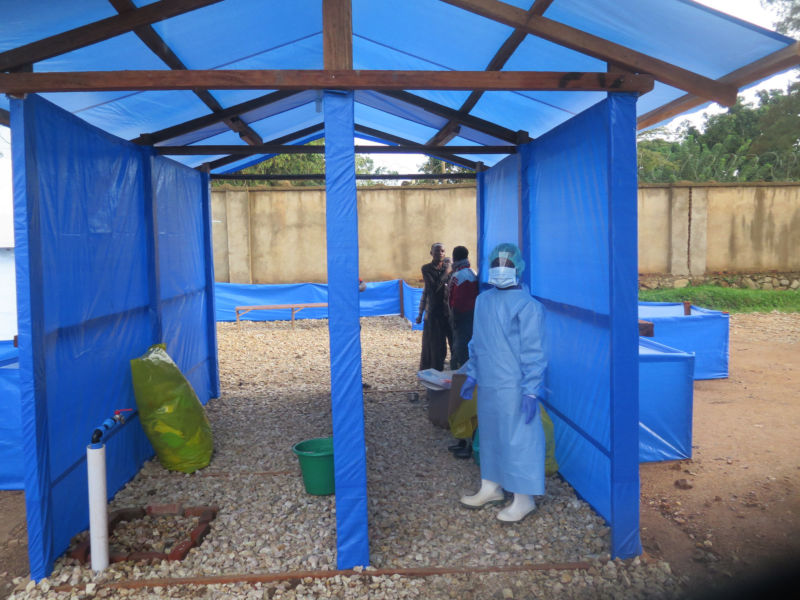Ebola Outbreak Reaches City Of 1 Million Residents

The Ebola outbreak in the Democratic Republic of the Congo has spread to a city of nearly 1 million residents. There are now 30 confirmed cases and 15 deaths in the city of Butembo reported in the latest update provided by the World Health Organization (WHO). The number of cases in the city center is still low, according to Doctors Without Borders, but that number is rising quickly in more outlying districts and suburbs.
The outbreak, which has been going on since August, has so far resulted in 467 confirmed cases and a further 48 probable cases. More than half of the cases have resulted in death (including those of 17 health workers), while 177 patients have recovered, including a newborn baby.
Limited containment
The rate of transmission is beginning to slow down in Beni, a smaller city approximately 36 miles north of Butembo that has the highest number of reported cases so far. But “the outbreak is intensifying in Butembo and Katwa,” writes the WHO, “and new clusters are emerging elsewhere.”
The outbreak is occurring in multiple locations across the DRC’s highly populated North Kivu and Ituri provinces, near the country’s borders with South Sudan, Uganda, Rwanda, and Burundi. Operations to prepare for handling and containing the outbreak must “continue to be upscaled to rapidly detect and respond to any potential cases” in other DRC provinces as well as neighboring countries, the WHO warns.
The risk of the outbreak spreading further geographically is “very high,” reports the WHO, “highlighted this week by the movement of several contacts of confirmed cases from Beni to Kisangani and Goma.” Tracing and monitoring contacts of people with confirmed infections plays an essential role in containing the outbreak. While these individuals were traced and have returned to Beni, keeping tabs on this remains tricky.
The outbreak is being fought in challenging conditions, with the affected provinces currently ravaged not just by conflict and a humanitarian crisis, but also by outbreaks of cholera, measles, and monkeypox. The internal displacement of people, as well as movement of Congolese refugees to neighboring countries, increases the risk of transmission. The necessity of a “safe and dignified burial” conducted by a team trained to prevent transmission while handling the body has also been a source of difficulty, with “recurrent aggression” to safe and dignified burial teams, the WHO reports.
Treatments and vaccines
But there is one hugely hopeful development: the testing of experimental treatments. In late November, the DRC’s Ministry of Health announced the start of a randomized controlled trial that would assess the efficacy and safety of anti-Ebola drugs, which had previously been available as part of a “compassionate use” protocol.
Under these guidelines, drugs that have shown some promise and safety in lab or animal studies can be given to consenting patients in cases where no proven treatment exists, as long as the results are monitored and reported. The randomized controlled trial will now allow for wide-scale and systematic testing of these treatments.
The WHO also announced last week that South Sudan is set to vaccinate healthcare and other frontline workers. A “ring vaccination” protocol in the DRC has seen vaccines administered to contacts of confirmed cases, as well as contacts of those contacts, with more than 40,000 people vaccinated so far.
The WHO considers the risk within the DRC, both regionally and nationally, to be very high but considers the situation low-risk on a global level. It is currently not advising any restrictions on travel to, or trade with, the DRC. The country was already identified by the US State Department as a “do not travel” zone because of conflict, which has now been joined by a Level 2 CDC travel alert that advises travelers to “practice enhanced precautions.”
READ MORE HERE
